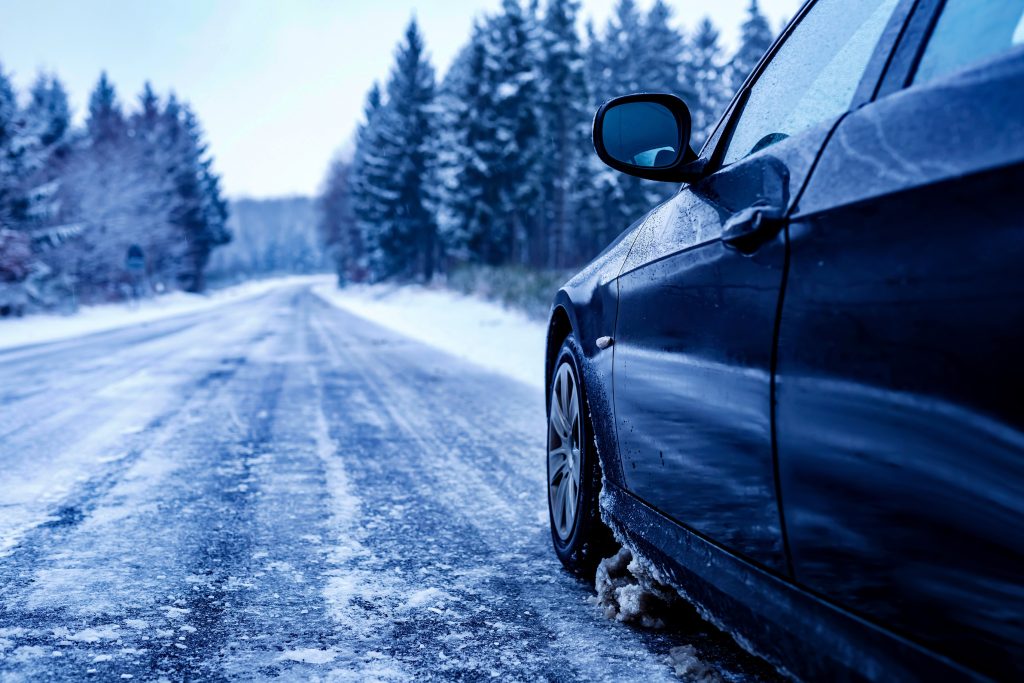
When traveling in the winter, it is essential to take additional precautions to ensure road safety. Here are some driving guidelines for winter conditions:
1. Slow down:
Reducing speed during winter weather conditions is important for driving safely. Speed limits are set for ideal conditions, but winter weather can drastically reduce visibility, making it difficult to judge speed and distance.
It is important to reduce your speed and allow plenty of extra time for your trip in order to account for unexpected weather conditions. Slowing down can help you stay in control of your vehicle, increase your reaction time, and decrease the risk of a collision.
2. Clear windows and mirrors:
To clear windows and mirrors, start by using a scraper or an ice scraper to remove any ice or frost build-up on the glass. If the ice scraper isn’t effective, try using a de-icer spray. Once the ice and frost are removed, use a cloth to wipe away any remaining moisture from the glass.
Make sure to pay extra attention to the edges of the windows and mirrors to ensure that there is no remaining moisture. Once the windows and mirrors are clear, use a window cleaner to clean away any dirt or debris that may be stuck to the surface.
3. Use your headlights:
Low visibility due to fog, snow, or rain can make it difficult for other drivers to see your car. Headlights provide more visibility and make it easier for other drivers to see you.
They can also help you see better in low light conditions. Additionally, using your headlights is a sign of courtesy and shows other drivers that you are aware of the situation.
4. Accelerate and decelerate slowly:
Accelerating and decelerating slowly helps maintain a steady speed and reduces the chance of skidding. When you accelerate, press down on the gas pedal gradually.
When you decelerate, gradually let off the gas pedal and lightly touch the brakes. This helps maintain a steady speed and reduces the chance of skidding.
5. Caution
Use extra caution when driving on bridges and overpasses: These areas tend to freeze faster than the rest of the road and can be more slippery.
6. Stay alert:
Be aware of your surroundings and anticipate the actions of other drivers. Be prepared to react quickly to any potential risks. Always obey the speed limit and be sure to use your turn signals.
Avoid distractions, such as using your phone while driving, and avoid driving while tired. Taking all of these precautions can help you stay alert and reduce the risk of an accident.
7. Increase your following distance:
It gives other drivers more time to react to sudden changes in their own situation. It is recommended to give a three second following distance, which means that you should count “one thousand one, one thousand two, one thousand three” before you reach the car in front of you.
This gives you plenty of time to react to sudden changes in speed or direction. Additionally, increasing your following distance can help reduce your risk of rear-ending another vehicle in the event of a sudden stop.
8. Be aware of black ice:
Be mindful of the temperature and be aware of the conditions that can lead to black ice formation, such as the air temperature being below freezing and the presence of moisture on the road surface.
9. Be prepared
A first-aid kit, blankets, a flashlight, extra batteries, jumper cables, flares, extra clothing and a basic tool kit. Make sure you have a working cell phone and a car charger. Keep a list of emergency phone numbers handy, including a tow truck service and roadside assistance.
Have a map of your area and the surrounding areas, and make sure you know your route and the different routes you can take in case of an emergency. Make sure your car is in good working condition, and that you have the necessary maintenance done regularly.



